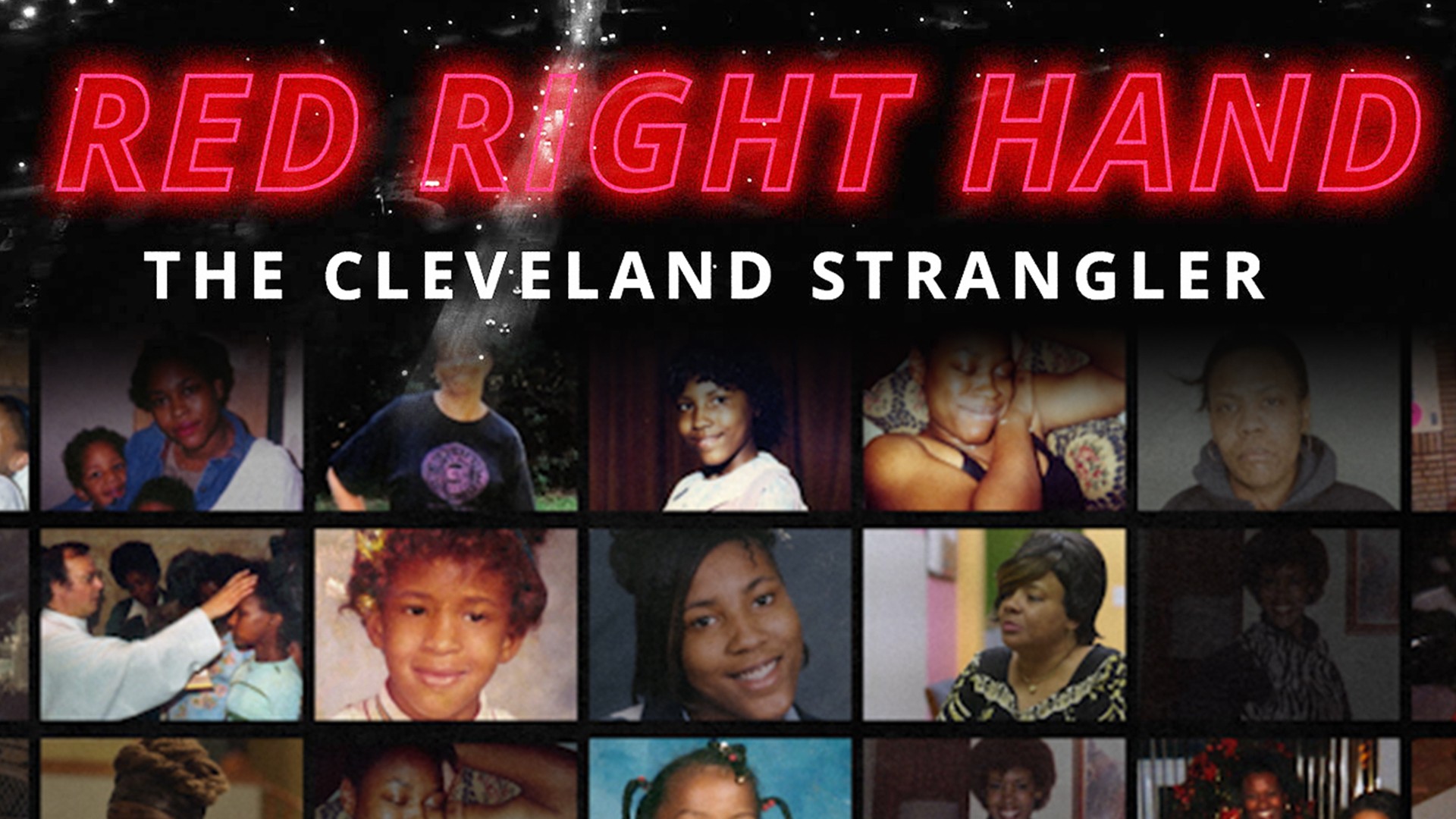A makeshift memorial for shooting victim Anthony Naiboa sits on a sidewalk in the Seminole Heights section of Tampa, Fla., Tuesday, Oct. 24, 2017. (AP Photo/Chris O'Meara) Composite image by Lia Kantrowitz
Around 8 PM last Thursday, a loud pop pierced the quiet streets of Southeast Seminole Heights, a suburban neighborhood in Tampa, Florida. Police officers who heard the gunfire descended on North 15th Street and East Wilder Avenue, where, about 200 yards away from a bus stop, cops found the body of Anthony Taino Naiboa on the sidewalk.A week later, Tampa Police officials don't have any serious leads or a clear motive in Naiboa's killing. But they believe the person who shot the 20-year-old autistic man also murdered 22-year-old Benjamin Mitchell and 32-year-old Monica Hoffa, two people who lost their lives earlier this month in the same vicinity. Mitchell was shot on October 9 around 9 PM while waiting for a bus. Hoffa's body was found four days later in a vacant lot about half a mile from where the two men were killed, after she disappeared two nights earlier."When you look at the time frame, the proximity, that there is no apparent motive, that the victims are alone at the time, it's clear to me that they are all linked," interim Tampa police chief Brian Dugan told reporters in a press conference last Friday.The three homicides have fueled speculation that a serial killer might be prowling for victims in Southeast Seminole Heights, prompting police to provide escorts for children and the distribution of light bulbs to illuminate front porches in the neighborhood. The red beret–wearing Guardian Angels are even patrolling sidewalks.

Still, at the same press conference, Dugan was cryptic when asked if the murders were the work of a serial killer. "We can call it what we want," he said. "If that brings attention to it, that's fine." Three days later, at a community meeting attended by 400 people, Tampa mayor Bob Buckhorn promised the perpetrator would be caught, but stopped short of using the term "serial killer.""We need you to call us and let us know what's going on," Buckhorn said. "That's how we're gonna catch this guy. And we will hunt this son of a bitch down until we find him!"Sherry Genovar-Simons, a Southeast Seminole Heights homeowner for 25 years, said there is a heightened sense of awareness in her neighborhood. Still, she's not exactly terrified. "Obviously, we are not dumb enough to go out at night by ourselves," she said. "I am not going to walk down the streets with my dogs at eight o'clock or nine o'clock in the evening like I usually do. But I am also not going to sit in my house and quake."Florida certainly has a long and sordid history with serial killers. In January 1978, Ted Bundy—who by then was responsible for dozens of murders in at least six states—broke into a Florida State University sorority house, where he attacked four young women, bludgeoning two of them to death. A few weeks later, Bundy abducted his final target, a 12-year-old girl named Kimberly Leach, whom he raped and beat to death. Soon after, Bundy was arrested, charged, convicted, and sentenced to death for the three Florida murders. He was executed in January 1989.Eleven months later, Aileen Wournos began a year-long campaign of terror across the Sunshine State during which she murdered at least six men. She was arrested in January 1991 and subsequently confessed to the killings, which were allegedly targeted at men who sexually assaulted her. She was executed by lethal injection in 2002, ten years after her conviction.Historically, though, Southeast Seminole Heights has not been a magnet for violent crimes, according to Genovar-Simmons, who served as president of the neighborhood civic association four years ago. "Most of the crime that I am aware of are crimes of opportunity like people breaking into cars or an unlocked home," she said. "We have never had any big crime sprees. I could go out to my car at two o'clock in the morning and never had any fear."Homicide experts canvassed by VICE said the three murders in Southeast Seminole Heights this month do bear some characteristics pointing to a serial killer. But they suggested the perp might be more accurately described as a spree killer—the distinction being that the latter snuffs out two or more victims at multiple locations with almost no break between the crimes.Most fundamentally, Scott Bonn, a criminology professor at Drew University who authored the 2014 book, Why We Love Serial Killers, said the fact Naiboa, Mitchell and Hoffa rode the bus and were killed within a one-mile radius of each other amounted to a "rather uncanny pattern.""This may be a mission killer," Bonn said, adding, "He or she could be trying to terrorize the community. That may the goal. It could be an individual who feels disenfranchised in some way and is sending out a message that says, 'The world will recognize me,' by committing these murders."Nelson Andreu, who worked six serial-murder cases during 20-plus years as a Miami Police homicide detective, wondered if Tampa cops had concluded the bullets used in the three Seminole Heights murders came from the same gun. "If they have recovered projectiles or casings that match, then the police can say without any doubt that it is the same killer," Andreu said. "Some killers want you to know that they are serial in nature."Andreu, who is now chief of the West Miami Police Department, believes the Tampa Police Department has done a good job of informing the public about the danger posed to the community. "They are using a lot of manpower and community outreach to thwart this suspect before he or she strikes again,' he told me.Rather than notorious serial killers like Bundy, Bonn, and Andreu both cited the Washington, DC, sniper attacks of 2002 when trying to make sense of the Tampa situation. Over a period of about three weeks, John Allen Muhammad and teenager Lee Boyd Malvo killed ten people and critically injured three others across Maryland, Virginia and the District of Columbia."It has the earmarks of a spree killing," Bonn offered of the Tampa saga. "It is happening in a very short time frame, and there is no cooling off period between the murders. Serial killers tend to have protracted cooling-off periods."Andreu suggested serial killings usually have some sort of sexual undertone to them. "There is a deviancy of some sort at play," he told me. "In Tampa, that is missing. The killer is just walking up and shooting people. It reminds me of the two guys who were just picking off people in DC."As the New York Times reported, some other experts think the days in between these incidents amount to enough of a cooling-off period to apply the serial killer label, assuming the three killings were the work of the same person.During the community meeting on Monday, Tampa's Chief Dugan told the standing-room only crowd at Edison Elementary School that they had to dispel any preconceived notions of what a serial killer might look or act like."When I think of a serial killer, I think of Ted Bundy," Dugan said. "But here is the problem. It may not be a white person and it may not be a male. How do we know there is not two step brothers living in a house and they are doing it together? Let's not let labels and stereotypes box in our vision and miss what is right in front of us."Mayor Buckhorn has been a bit less careful with his language. "Bring his head to me, all right?" he ordered police officers Wednesday in a video aired by NBC News. "Let's go get it done." On Thursday, police released a new video showing what they described as a person of interest (rather than a suspect) brandishing what appeared to be a phone and, later, running in the area on the night Mitchell was shot.For her part, Genovar-Simons said she didn't want to speculate about whether the suspect is indeed a serial killer. "The police seem to think it might be," she said. "Usually, we don't have murders, especially three so close at one time. There is definitely something strange about it."Follow Francisco Alvarado on Twitter.
Advertisement

Still, at the same press conference, Dugan was cryptic when asked if the murders were the work of a serial killer. "We can call it what we want," he said. "If that brings attention to it, that's fine." Three days later, at a community meeting attended by 400 people, Tampa mayor Bob Buckhorn promised the perpetrator would be caught, but stopped short of using the term "serial killer.""We need you to call us and let us know what's going on," Buckhorn said. "That's how we're gonna catch this guy. And we will hunt this son of a bitch down until we find him!"Sherry Genovar-Simons, a Southeast Seminole Heights homeowner for 25 years, said there is a heightened sense of awareness in her neighborhood. Still, she's not exactly terrified. "Obviously, we are not dumb enough to go out at night by ourselves," she said. "I am not going to walk down the streets with my dogs at eight o'clock or nine o'clock in the evening like I usually do. But I am also not going to sit in my house and quake."
Advertisement
Advertisement
Advertisement
